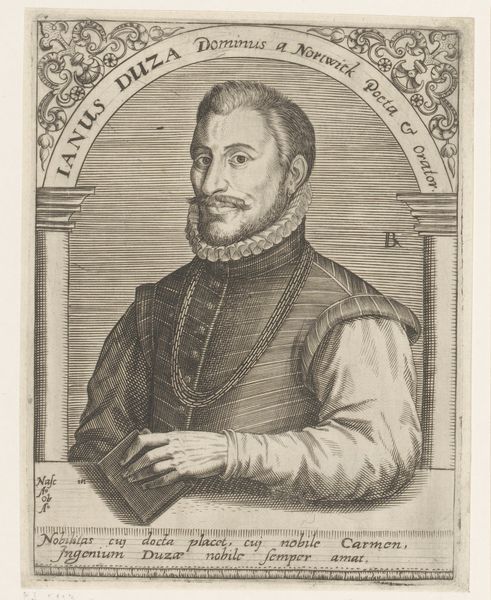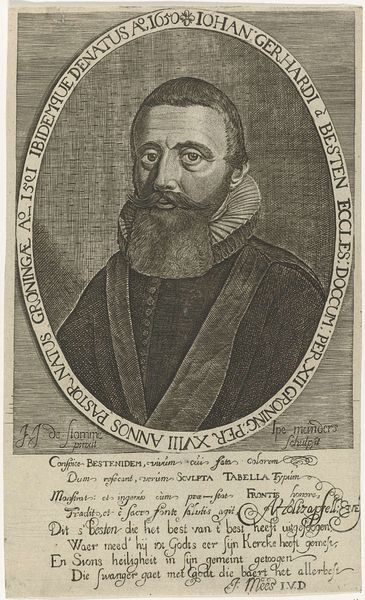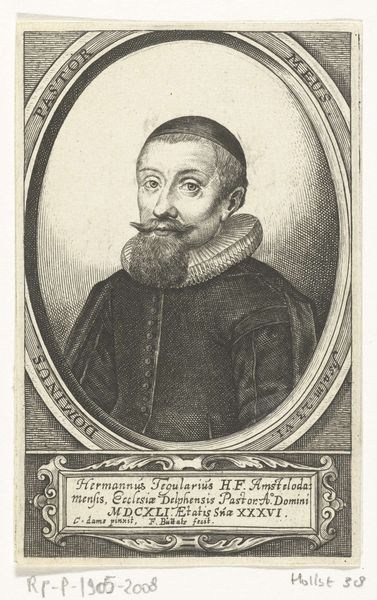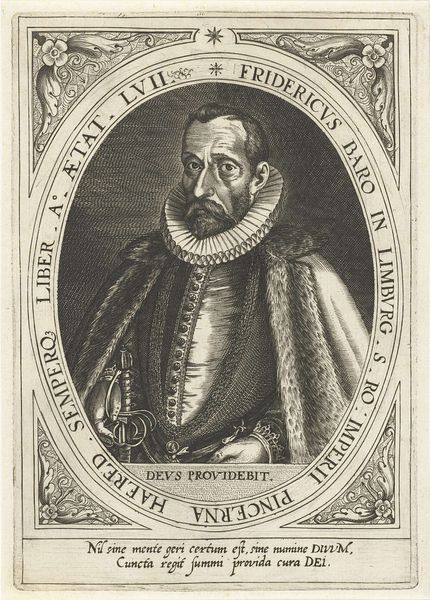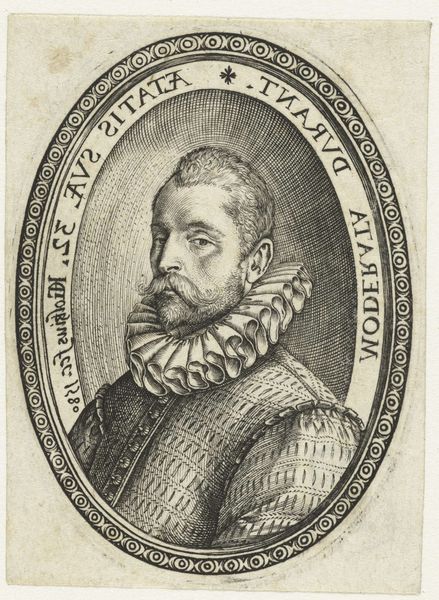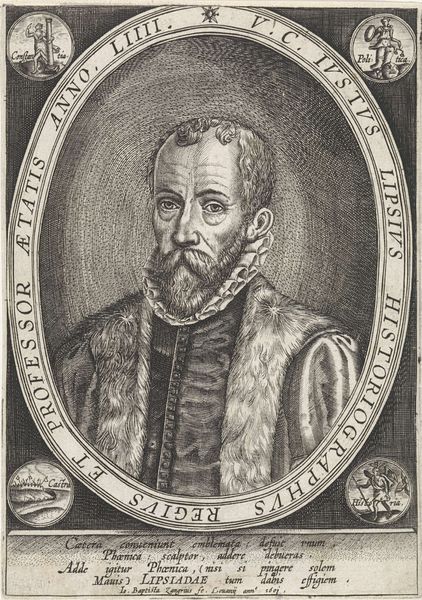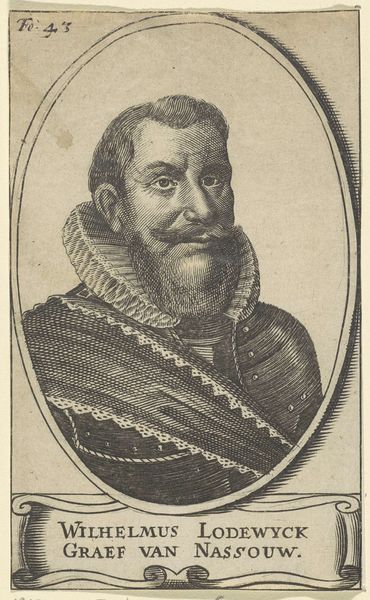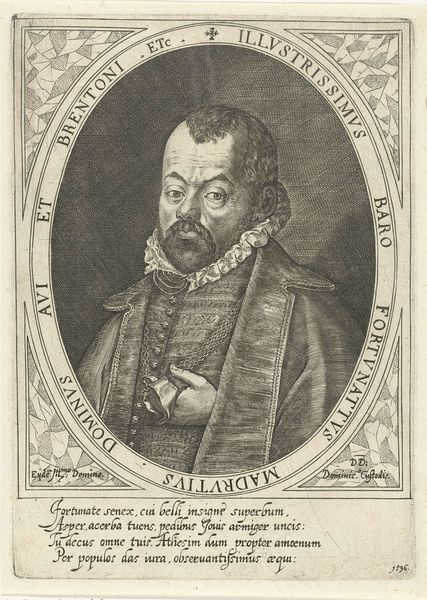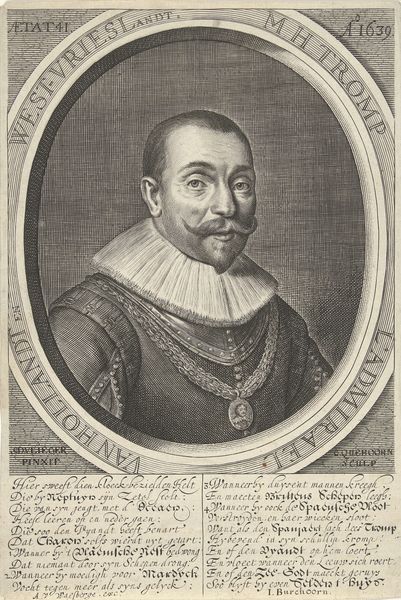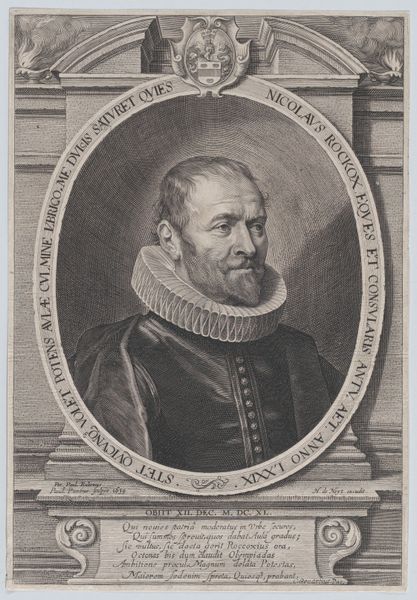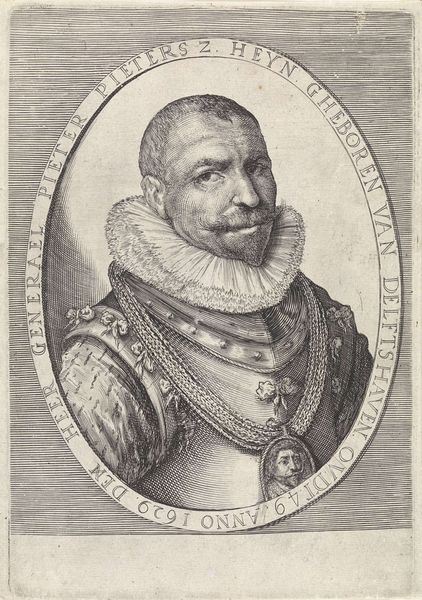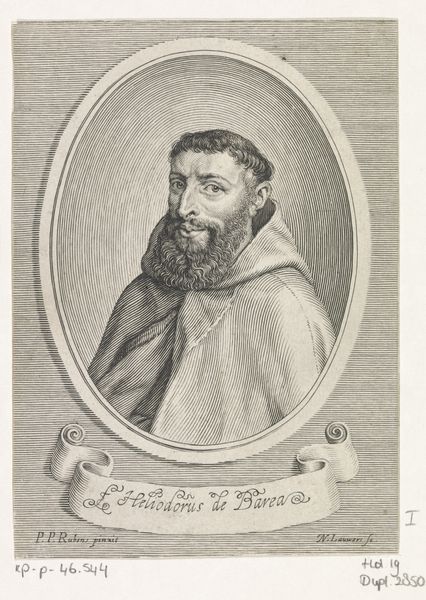
Vincenz Muschinger, Council to Emperor Rudolph II 1611
0:00
0:00
drawing, print, engraving
#
portrait
#
drawing
#
baroque
# print
#
men
#
italian-renaissance
#
engraving
Dimensions: sheet: 8 1/4 x 6 1/16 in. (21 x 15.4 cm) plate: 7 7/8 x 5 9/16 in. (20 x 14.1 cm)
Copyright: Public Domain
Curator: Look at this striking portrait! This is an engraving made in 1611 by Aegidius Sadeler II depicting Vincenz Muschinger, a counselor to Emperor Rudolph II. Editor: Whoa, I get a definite vibe of power here, contained power. His eyes are direct, like he knows something you don't. I can't help thinking, "What secrets are hidden beneath that beard?". Curator: Absolutely! Sadeler masterfully uses the conventions of Baroque portraiture to communicate Muschinger's status. Think about the ornate cartouche surrounding the figure, inscribed with titles and heraldic emblems. The use of ornament here conveys authority and pedigree. It really anchors Muschinger within a web of imperial power relations. Editor: That collar alone screams “important!". It's almost architectural. Plus, I'm digging the texture, the detail in the clothing, how light dances across it despite the limitations of the print medium. I sense wealth here, you can almost hear the rustle of rich fabrics. Curator: Indeed. We should acknowledge how this image reflects a broader trend. During the Renaissance and Baroque eras, portraiture evolved as a means of projecting and solidifying power for the rising merchant classes and the established aristocracy. Vincenz Muschinger here isn't merely being depicted, he's being positioned within a particular ideological framework. It all ties into this emerging concept of identity linked to class. Editor: Ah, the performance of status! You know, looking at his face more, I see a weariness, something more complicated than just “power." Perhaps even a hint of… mischief? This portrayal is far from a simple celebration, more complex than expected from official portraiture. Curator: I appreciate you pointing out the inherent contradictions embedded in these representations. Portraits operate within very specific structures, even as they simultaneously invite intimate and potentially subversive interpretations. How do you think we engage with it as a contemporary viewer? Editor: Knowing this comes to us from 1611 makes me wonder about the sitter and the artist, the world they moved in, so utterly different, and yet here they are still, alive in lines of ink. A powerful presence after all these years. Curator: It’s that capacity for connection across vast gulfs of time that continues to draw me to art. Thank you for offering a reading that both acknowledges its complexities but brings in an imaginative understanding of this compelling figure.
Comments
No comments
Be the first to comment and join the conversation on the ultimate creative platform.
